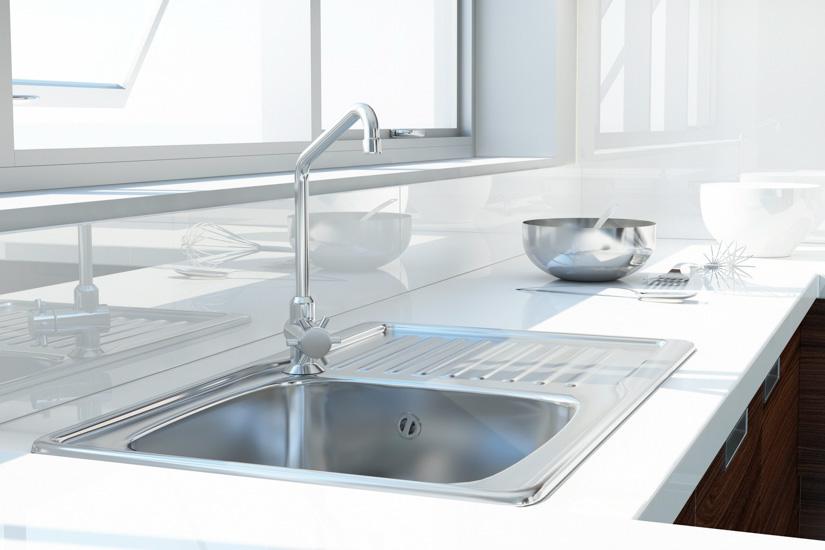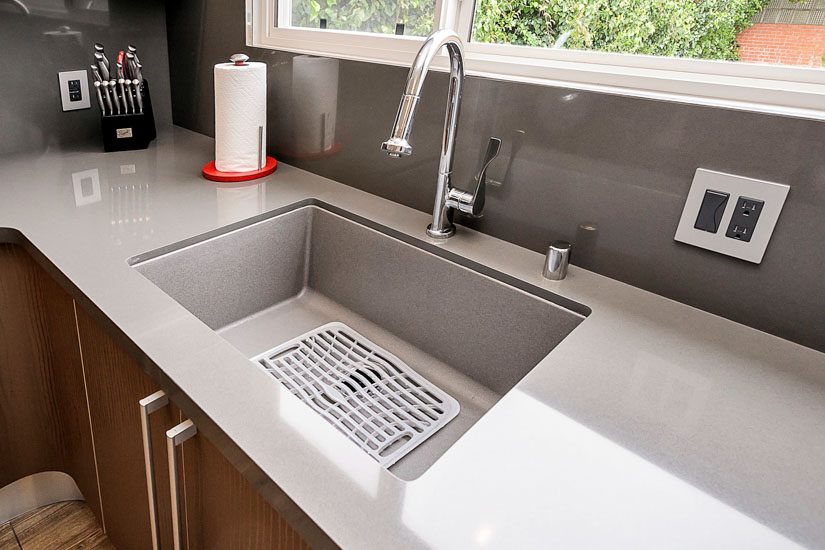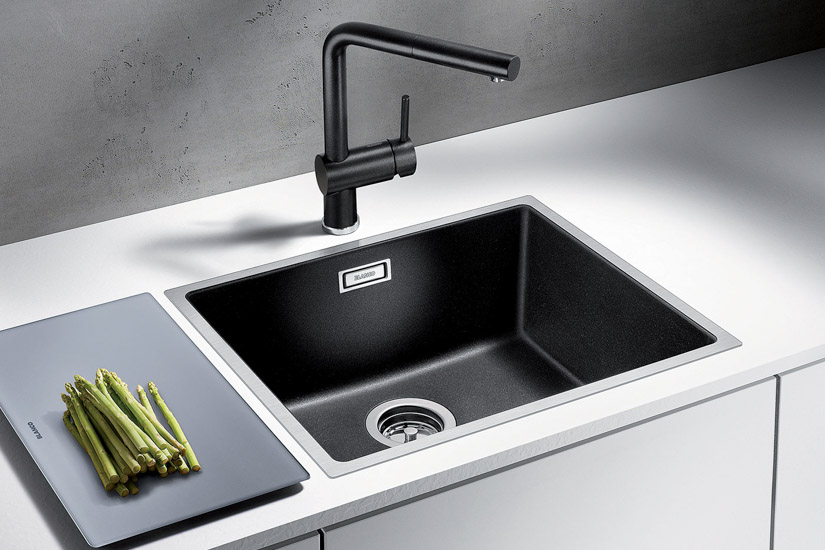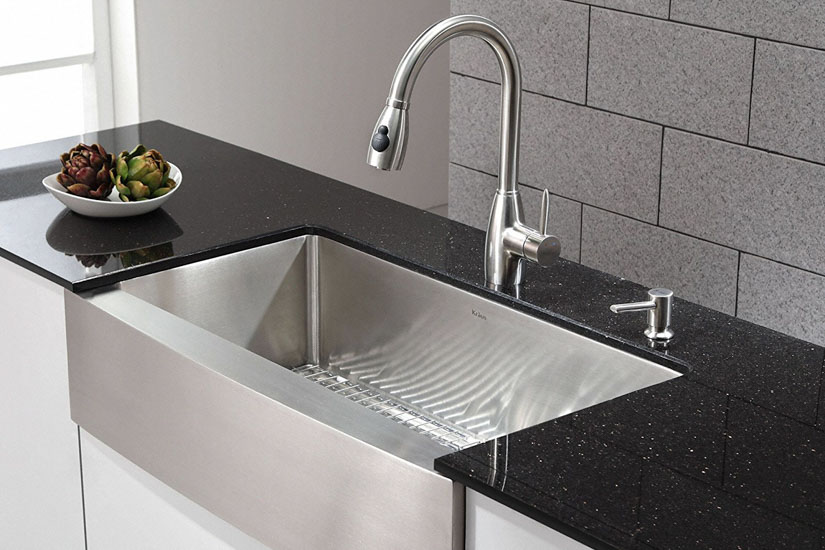The kitchen may be the heart of the home, but the sink is the heart of the kitchen.
There are a ton of different decisions that need to be made when remodeling a kitchen, but none perhaps as fundamental as the type of sink you choose. But how to choose is the real question. There are a ton of options, from mounting style to material, color, number of bowls, and size.
To help you narrow it down, here are the five main kitchen sink styles—top mount, undermount, flush mount, integrated, and farmhouse—and the pros and cons of each.

Top mount sink
The top mount kitchen sink is the most common type of sink (it’s also known as a drop-in sink or self-rimming sink). The top mount sink is installed from above: A hole is cut into the countertop according to a template provided by the sink manufacturer, and after the countertop is installed, the sink is simply dropped in from above. The rim of the sink, between the sink and the countertop, must be caulked with silicone to prevent water seepage.
If you’re doing a lot of the remodeling work yourself, a top mount sink is a great option because no special skills are needed to install it, as long as the hole in the countertop is cut correctly. However, the rim of the sink means you can’t simply swipe messes right into the sink, and the rim can collect debris and mildew that requires additional cleaning. Also, the look of the top mount sink is somewhat dated.

Undermount sink
If you desire a modern kitchen, an undermount sink is the way to go. The undermount sink is attached to the bottom side of the countertop, supported by the base cabinets. This makes it even more crucial that you choose a really high-quality countertop fabricator to cut a really clean, beautiful edge.
Not only does an undermount sink provide a sleek, modern look, it also makes cleaning up spills and messes really easy, since you can just swipe everything cleanly into the sink. Installation is tricky, so an undermount sink should be installed by a professional.

Flush-mount sink
A flush mount sink, also known as a tiled-edge sink, sits flush with the countertop, supported by the base cabinets. The sink itself will usually have a couple of extra inches around the bowl. Grout is required between the sink and the countertop, but it does offer a generally smooth surface with the countertop so that spills can be wiped right into the sink.
There are a number of manufacturers making high-quality flush mount sinks, but our new favorite flush mount sink is made by Top Zero because of the seamless, vanishing edge. The edge of the sink, only a few millimeters wide, is mounted perfectly flush with the countertop, and there’s no visible grout line (Top Zero advertises as an undermount sink, but because of the way the sink is installed, for this purposes of this blog post, we’ve classified it as a flush mount sink). Installation takes some skill (and the countertop has to be perfectly cut), so it’s a good idea to have the sink professionally installed.

Integrated sink
An integrated sink is one that is a sink that’s made out of the same material as the countertop, and in fact, the sink and the countertop are all once piece, fused together at the factory. There are only a handful of manufacturers that offer integrated kitchen sinks—Corian by DuPont is a popular one—so that makes them hard to find and usually pretty expensive. (Integrated sinks are more common in bathrooms than kitchens.)
The pros of an integrated kitchen sink are that there is absolutely no grout line—there’s no grout at all! And that makes them not only convenient for cleanup, but also means you have one less corner in your kitchen to collect germs and mildew. However, if you have your heart set on a stainless steel sink, then you’re going to have to get a stainless steel countertop, too.

Farmhouse sink
Farmhouse sinks are recognizable by their exposed front wall or apron. These sinks are large and usually ceramic, though they can be found in stainless steel or copper as well. They are installed on top of a cabinet, usually tucked under the edge of the countertop so that you can swipe kitchen debris right into the sink. There will be a small grout line that will need to be cleaned from time to time.
While farmhouse sinks are most commonly found in traditional farmhouse-style kitchens, the style is experiencing a resurgence and the sinks are now sometimes found in modern kitchens.
How to choose the kitchen sink that’s right for you
Budget isn’t really a factor in choosing a kitchen sink style since you can find all styles of kitchen sink in a range of prices. How much you cook and the type of cooking you do, as well as whether you’re planning to install the sink yourself could be a factor. The style of kitchen sink you choose will largely depend on the style of your kitchen and the look of your cabinets.
